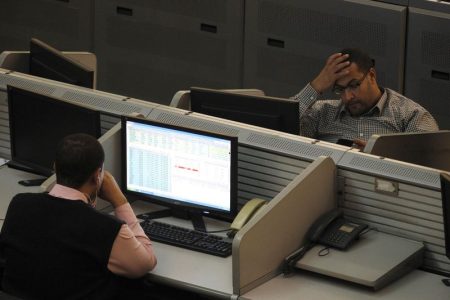© Reuters.
MUMBAI – India’s banking sector is grappling with a severe liquidity deficit, reaching a near five-year high as the Reserve Bank of India (RBI) reported a shortfall of ₹1.74 lakh crore. This liquidity strain has been primarily driven by significant Goods and Services Tax (GST) dues and recent bond auctions. Additional pressures have arisen from earlier withdrawals through the Incremental Cash Reserve Ratio (I-CRR), which reduced available funds by approximately ₹1 lakh crore.
The situation intensified on Wednesday, with the deficit escalating to ₹1.77 trillion, marking the highest level since the last significant peak on December 26, 2018, when the deficit hit ₹1.86 trillion. The financial strain is evident in the interest rates, with the weighted average call rate climbing to 6.88% and the Triparty Repo Dealing and Settlement (TREPS) rate at 6.80%, both exceeding the RBI’s Marginal Standing Facility (MSF) rate of 6.75%.
DGM V Ramachandra Reddy of RBI highlighted on Tuesday that tax payments have led to potential deficits peaking at ₹2 lakh crore. In response to these challenges, RBI has been employing various transitioning tools aimed at moderating inflation while supporting growth, a strategy that has been in place since the post-Covid period.
Kotak Mahindra Bank analysts have projected that weekly cash flows will face a shortfall, with outflows estimated at ₹2.06 lakh crore against inflows of ₹1.6 lakh crore. This includes coupon inflows totaling ₹13,900 crore and anticipated government expenditures towards the month-end.
Relief is expected in the following week as liquidity concerns are anticipated to ease due to upcoming government bond redemptions worth ₹891 billion due on Friday and Tuesday, alongside projected government spending. The maturing government bonds on these days are expected to inject ₹56,572.719 crore and ₹32,500 crore into the system, respectively.
This liquidity crunch has led to heightened borrowing from the RBI’s MSF, reaching an unprecedented December high of ₹2.3 trillion as banks seek to manage their short-term funding needs amidst this tightening scenario. The market is closely watching for signs of improvement in liquidity conditions as these government bond redemptions take place.
This article was generated with the support of AI and reviewed by an editor. For more information see our T&C.
Read the full article here















